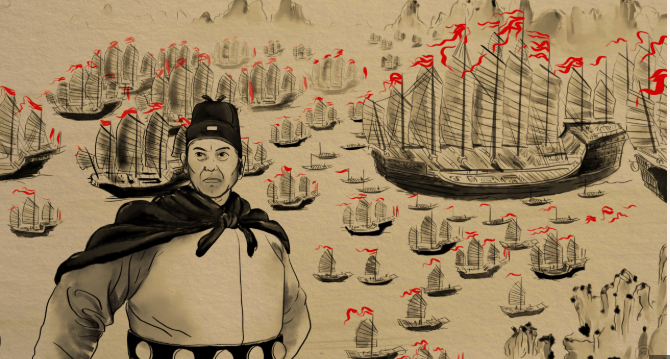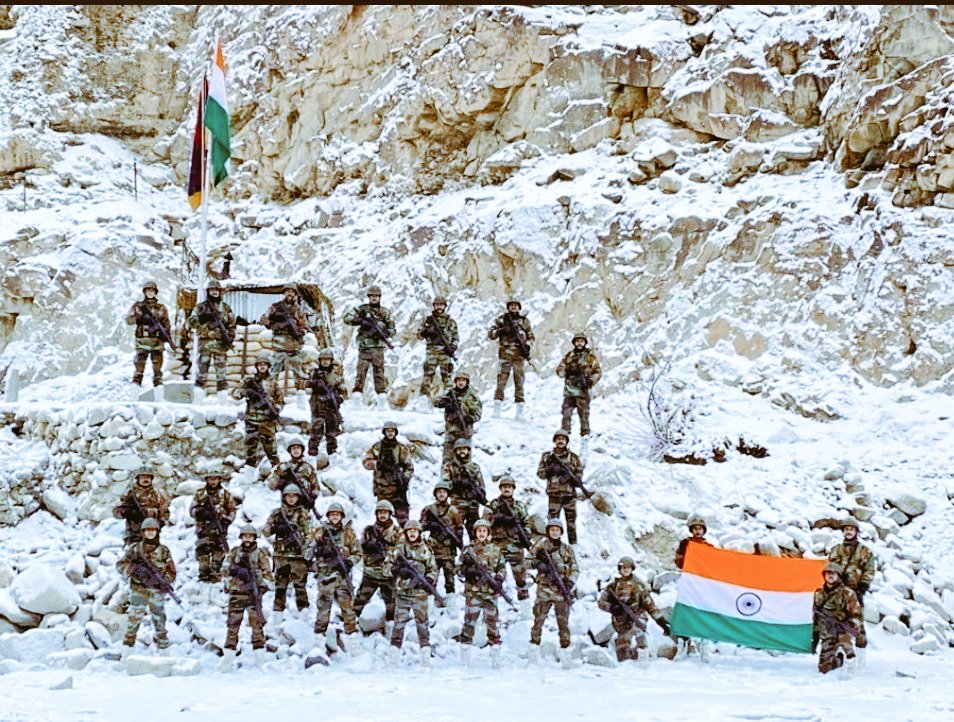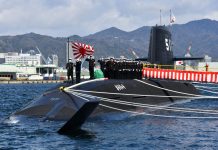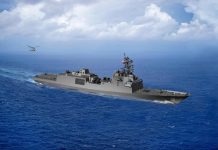China is the world’s second-largest economy and the third-largest military power after the US. Along with the US and Russia, China is considered to be one of the three superpowers on Earth. However, despite these impressive rankings, China has few real battlefield victories to its name.
Notwithstanding China’s rankings in theoretical power indexes, both the Chinese People’s Liberation Army (PLA) and Chinese weapons systems are widely considered to be untested in real battlefield conditions.
The last intense war China fought was nearly five decades ago in Vietnam, where the PLA got a bloody nose. Similarly, despite impressive progress in manufacturing indigenous weapons systems, from fighter jets to aircraft carriers, China-made combat platforms have not been able to shed the negative image generally associated with Chinese manufacturing and technology – ‘cheap but unreliable.’
In the Chinese national conscience, the era between 1842 and 1949 is remembered with great pain as the “Long Century of Humiliation.” However, contrary to this popular historical memory, the Chinese century of humiliation lasted much longer and stretched well into the last years of the twentieth century.
In fact, some may argue that this century of humiliation lasted until the second decade of the 21st century, when India, an economy five times smaller than China’s, humbled the PLA first in Doklam (2017) and then again in Galwan (2020).
On both occasions, China, a larger military and economic power, was forced to relent and withdraw, accepting the status quo ante.
Given this background, the claimed success of Chinese aircraft against the combat-tested French aviation superstar, the Rafale fighter jets, was a much-needed relief —an event that Beijing wanted to utilize to the fullest.
And, according to the French intelligence, China utilized every trick in the playbook, from fake social media accounts and AI-generated images to footage from video games, to take advantage of the unconfirmed Pakistani claims that Chinese fighter jets, the J-10CE and JF-17, downed five IAF aircraft, including three Rafales.
It must be noted that while the IAF has accepted combat losses during the brief four-day war with Pakistan, it has not provided any details on the number and type of aircraft lost.
Notably, French Air Force Chief Gen. Jérôme Bellanger stated that he has seen evidence indicating just three Indian losses — a Rafale, a Russian-made Sukhoi, and a Mirage 2000. Further, it has not been established that the fighter jet losses were because of Chinese fighter jets and not a result of Pakistani AD systems or even a fratricidal kill by India’s own surface-to-air missiles.
Chinese Propaganda In Full Swing
According to an Associated Press report, the French military and intelligence officials have concluded that China deployed its embassies to spread doubts about the performance of Rafale jets after they saw combat in India and Pakistan’s clashes in May.
Findings from a French intelligence service, as seen by the AP, indicate that defense attaches in China’s foreign embassies led a charge to undermine Rafale sales. They sought to persuade countries that have already ordered the French-made fighter — notably Indonesia — not to purchase more and to encourage other potential buyers to opt for Chinese-made planes.
According to French officials, the Chinese campaign included viral social media posts, manipulated imagery showing supposed Rafale debris, AI-generated content, and video-game depictions to simulate supposed combat.
Furthermore, more than 1,000 social media accounts were created to push the narrative of Chinese technological superiority.
The Chinese embassy defense attaches echoed the same narrative in meetings they held with security and defense officials from other countries.
If the claims made by French intelligence officials are accurate, then it shows the desperate attempts by Chinese officials to prove the worth of Chinese technology and China-made weapons systems based on the India-Pakistan clash in May.
These desperate efforts, even involving the use of AI-generated images and footage from video games, underscore a crucial handicap that Chinese weapons face in the international arms export market. Despite the hype surrounding Chinese weapons, they have yet to be really tested in real combat scenarios.
In fact, China’s claims to superpower status also suffer from this same lacuna. Despite having the world’s largest army by manpower, the PLA is not a battle-tested army. As a matter of fact, the PLA was trounced by a much weaker army nearly five decades ago when it fought its last intense battle.
Indeed, an argument can be made that China’s ‘century of humiliation’ is not over, and Beijing is still looking for a decisive victory to redeem its battlefield image.
China’s Glorious Military History
China has a storied military history.
Eighty years before Vasco da Gama’s arrival in Calicut in Southwest India, a formidable Chinese navy ruled the South China Sea and the Indian Ocean Region, right up to the Arabian peninsula and the East African coast.
Between 1405 and 1433, the Ming dynasty in China launched seven voyages led by Admiral Zheng He to explore these regions, establish trade relations, collect tribute, and project military power across vast areas.
One such voyage typically featured over 300 vessels, including treasure ships, supply ships, water tankers, warships with cannons, and over 28,000 sailors. This was the largest naval fleet the world had ever seen, a sight to behold wherever the fleet docked. Its size and strength were not to be surpassed until the First World War.

However, this was not a one-off incident but rather the norm in the pre-modern world, where China often set the gold standard for military strength and military innovation.
During the Han Dynasty (206 BCE–220 CE), China maintained a professional army of over 500,000 soldiers, using advanced crossbows and cavalry to expand into Central Asia.
The Tang Dynasty (618–907 CE) further exemplified its military prowess, boasting a standing army of 600,000, including elite cavalry, which defeated nomadic tribes and extended its control over Korea and Vietnam.
China invented gunpowder and firearms during the Song Dynasty (960–1279 CE). They were also the first to use a magnetic compass for navigation.
The Ming Dynasty (1368–1644 CE) boasted a million-strong army and a powerful navy. It was during the Ming dynasty that Admiral Zheng He’s fleet was sent to various countries in the Indian Ocean Region.
Even during the Qing Dynasty (1644–1912), China’s military subdued vast regions, including Xinjiang and Tibet.
These examples highlight China’s historical ability to combine large-scale mobilization, innovative weaponry, and strategic campaigns to dominate East Asia, Central Asia, and beyond.
However, this storied military history was followed by what Chinese people remember as the ‘century of humiliation.’
China’s Century Of Humiliation
The Industrial Revolution in Western Europe meant that China was no longer able to compete with the West in industrial production, scientific innovation, or even military technology.
The Western countries made full use of this technological advantage and defeated China in a series of wars in the 19th century, forcing Beijing to accept several humiliating treaties.
China suffered two back-to-back defeats in the two Opium Wars (1839–1842) and (1856–1860). In 1895, Japan (Asia’s first industrialized nation) defeated China, and Taiwan went under Tokyo’s control.
China was again brutally invaded by Japan in the 1930s. China emerged victorious over Japan in World War II. However, that was primarily due to Allied help.
China’s Century Of Humiliation Still Not Over?
Officially, this ‘century of humiliation’ ended with the Communist victory in the Chinese Civil War in 1949. However, China has still not scored a decisive battlefield victory that can reestablish its past military glory.
China defeated India in the 1962 war in the Himalayas. However, that victory was primarily due to Indian strategic mistakes rather than China’s military superiority. In the 1960s, India had a clear air power superiority over China, but the Indian political leadership chose not to use its Air Force.
India and China clashed again at Nathu La Pass in 1967. However, this time, China suffered heavy casualties, and it made a hasty retreat.
In 1979, China invaded Vietnam. However, here, too, China withdrew after heavy casualties. This was also China’s last intense battle.
More recently, India and China clashed at Galwan in 2020. Both countries suffered multiple casualties. However, this was no war, as no firearms were used. This was essentially hand-to-hand combat.

Both countries are still engaged in de-escalation talks.
Even though the ‘century of humiliation’ has officially come to an end, China is still awaiting a decisive battlefield victory. Just like China’s PLA, Chinese weapons systems are also not combat-tested.
The India-Pakistan clash in May was perhaps the first real test of China’s weapons technology, and Beijing did not want to leave any stone unturned in taking full advantage of this clash.
However, whether or not this Chinese propaganda will deliver any actual results is yet to be seen. Indonesia, one of the primary targets of this Chinese propaganda, appears to be unmoved.
According to the latest reports in the French media, Indonesia is on track to order 24 additional Rafale jets during the visit to Paris of Indonesian President Prabowo Subianto, who will be France’s guest of honor for the July 14 celebrations.
- Sumit Ahlawat has over a decade of experience in news media. He has worked with Press Trust of India, Times Now, Zee News, Economic Times, and Microsoft News. He holds a Master’s Degree in International Media and Modern History from the University of Sheffield, UK.
- VIEWS PERSONAL OF THE AUTHOR.
- He can be reached at ahlawat.sumit85 (at) gmail.com




